Cristina Nualart – Biodiversity as a Flattened Cage

We are happy to welcome a new contributor to Grapevine, who will be commenting primarily on the art scene in HCMC.
Cristina Nualart is a creative practitioner living in HCMC. She visits exhibitions and talks to artists and draws/paints/looks/thinks. The opinions she expresses come from her left brain, or her right brain, or her spilt guts, or the chip on her shoulder, or the heart on her sleeve.
Colombian artist Johanna Calle just opened her exhibition of material-happy drawings in San Art, Saigon, where I spoke to her before she returns to her homeland today.

Although the exhibition carries the title Irregular Hexagon, as did the previous exhibition in this international collaboration between Vietnam and Colombia, it is mere coincidence that such a formalist expression suits the works.
Johanna’s explorations center around environmental and social concerns. The haptic drawings comment on biodiversity, land ownership, and the domination of habitable space by the powerful. The titles of the artworks -for example: Perimeters, Native Trees,Shadow- are minimalistic and strangely literal. Strange because this artist has a history of making text art. Indeed, many of the pieces on show are drawing made from words, or at the very least letters. Playing with text is part of the art making process, more than the labelling of the art.
The flattened bird cages below, spray painted gloss grey, are called Perspectives, not as a reference to drawing linear perspective, but to describe what the work literally shows: the compression of a 3-dimensional habitable space (albeit a prison) into one where the inhabitants are so close to each other, or to the confines of the space, that distance is annulled. The back wall is so close to the front wall that there is no room to walk around. The intense urban density of Ho Chi Minh City, which I examined in DomestiCity, surprises even a native of Bogotá, a sprawling capital of 8 million people.
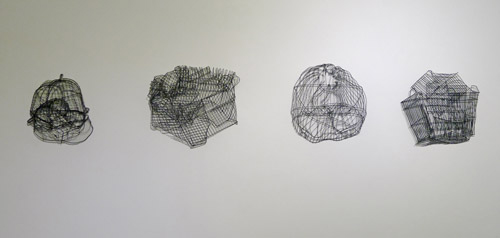
The cages-turned-drawings squawk of the unfairness of a system where land speculation has locked millions of people out of the possibility of having a home, let alone a spacious home. Perhaps their rattling appearance will echo of the precarious tin shacks tightly clustered between ‘real’ buildings or toppling over canals all over Ho Chi Minh City. The critique works for both Vietnam and Colombia, Johanna notes.
Evading such claustrophobic dwellings, the artist turns to nature, or the lack of, and presents us with intensely cerebral trees, made not of natural materials, but entirely of distinctly human language: written words. Typewritten on an old Vietnamese typewriter , the printed letters are an unspaced mass of Vietnamese and English words. The artist started typing up a coherent, existing piece of writing, but her subconscious inability to make sense of the new culture she finds herself in, turned the letters into illegible chaos, much like unplanned urban development wrecks havoc with nature.
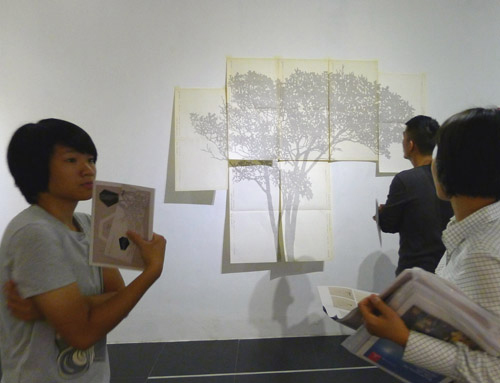
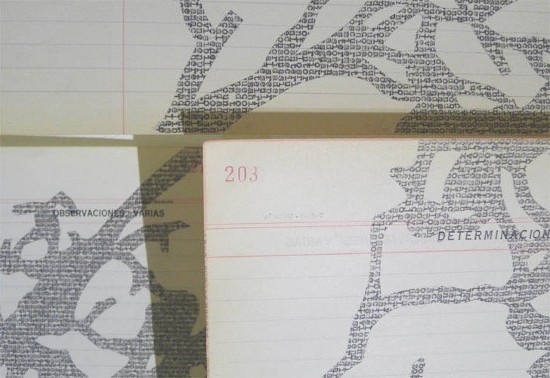
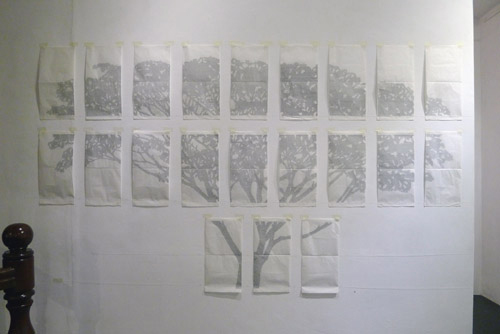
The paper she uses for the pieces shown above comes from Colombian ledger books. They are used as hand written archives of property ownership. Johanna explains that many illiterate farmers, not being able to check what they are signing in these records, can be cheated. The system is not only inherently biased towards rich people who can afford to buy lots of land, it also allows for unfair dealings, where the underdog loses out.
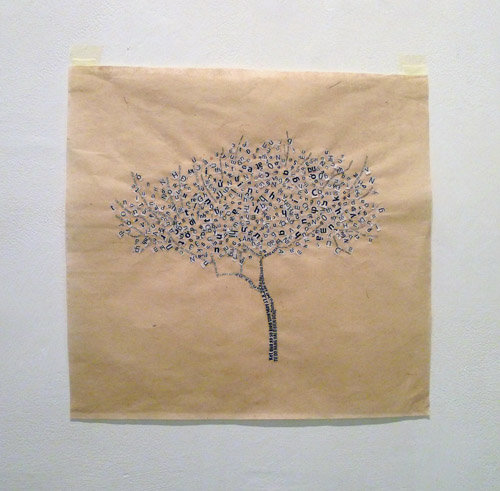
The Ho Chi Minh City residency lasted only for only 3 weeks, thus the artist created many of the artworks before her arrival. On location, she made more pieces linking them, in their material and their content, to Vietnam, but maintaining the aesthetic simplicity that unifies the show. For these visual poem lookalikes she uses Vietnamese rice paper and Vietnamese publications, drawing trees common to South East Asia.
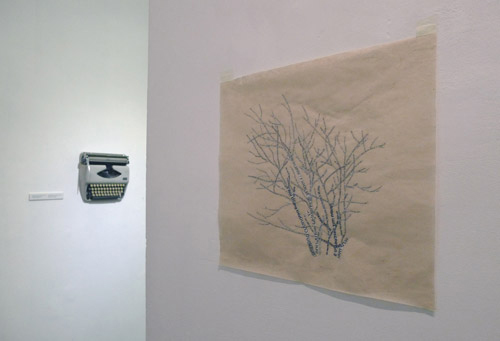
The delicate artwoks on view presents a discreetly whispered criticism of land use. In Vietnam, concerns about land often relate to the government’s lease of it, or expropriation of it. In Colombia, there are reports of uneducated farmers whose oral witness account in court narrates the history of what they have planted, and describes the trees in the plots whose ownership they claim, but who others, sometimes corruptly, contend. The trees from these stories of injustice and hope are the ones drawn by Johanna Calle.
Photos by Cristina Nualart
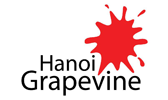
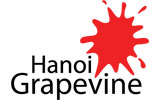

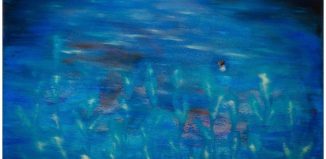









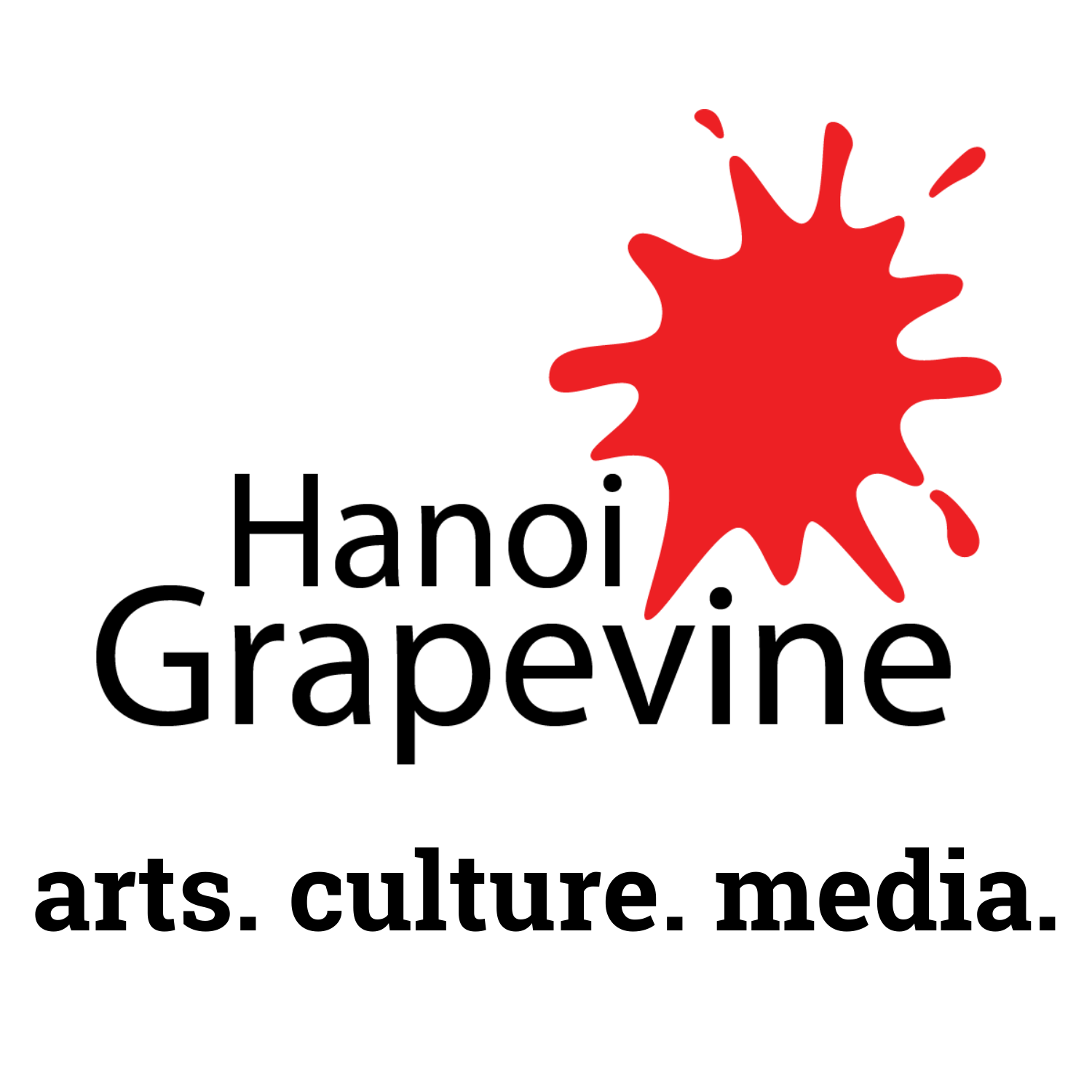
Thank you for publishing this. The hyperlinks in the original text aren’t working here, but maybe found (in orange colour font), on the version on my blog: http://cristinanualart.com/2012/biodiversity-as-a-flattened-cage-the-drawings-of-johanna-calle/
Great review. Many thanks for covering this exhibition. The complete program includes 6 artists and 6 independent spaces in Vietnam, Singapore, Australia, Israel, Morocco and Turkey.
Best,
José Roca, curator, Irregular Hexagon
http://cargocollective.com/wwwartefloraorg